Frost Protection - UTL Repository
Frost Protection - UTL Repository
Frost Protection - UTL Repository
Create successful ePaper yourself
Turn your PDF publications into a flip-book with our unique Google optimized e-Paper software.
MECHANISMS OF ENERGY TRANSFER<br />
through a metal rod if one end is placed in a fire, where the heat is transferred<br />
from molecule to molecule to the other end of the rod. Conduction is an<br />
important transfer mechanism for energy storage in the soil and therefore it is<br />
important for frost protection.<br />
The rate that energy transfers by conduction depends on the capacity for the<br />
material to conduct energy (i.e. thermal conductivity) and the gradient of<br />
temperature with distance into the material. The thermal conductivity of a soil<br />
depends on the type and relative volume occupied by soil constituents. Air is a<br />
poor conductor of heat, so dry soils with more air spaces have lower thermal<br />
conductivities. The thermal conductivity of dry soils varies, but it is<br />
approximately 0.1, 0.25 and 0.3 W m -1 °C -1 for organic, clay and sandy soils. If<br />
the soils are nearly saturated with water, the conductivity is approximately 0.5,<br />
1.6 and 2.4 W m -1 °C -1 for the three general soil types.<br />
There is positive conduction into the soil when the surface is warmer than the<br />
soil below and the conduction is negative when heat conducts upward to a colder<br />
surface. As the sun comes up, the surface is warmer than the soil below, so heat<br />
conducts downward and is stored in the soil. As net radiation decreases in the<br />
afternoon, the surface will cool relative to the soil below and heat is conducted<br />
upwards towards the surface (i.e. negative flux). This negative heat flux continues<br />
during the night as soil heat conducts upwards to replace lost energy at the cooler<br />
surface. On an hourly basis, the soil heat flux density can change considerably<br />
but, on a daily basis, the amount of energy going into the soil is generally about<br />
the same as the quantity leaving the soil. In the longer term, there is a slight<br />
deficit each day during the autumn, so the soil gradually loses energy and cools.<br />
In the spring, there is a slight increase in energy receipt and storage each day, so<br />
the mean daily soil temperature will gradually increase. One should always<br />
remember that soil selection and management has both short-term (i.e. daily) and<br />
long-term (i.e. annual) effects on soil temperature.<br />
Soil flux heat density (G) is estimated as:<br />
G = –K ∂T<br />
s W m -2 Eq. 3.11<br />
∂z<br />
where K s is the thermal conductivity (W m -1 °C -1 ) and the second term on the<br />
right hand side is the change in temperature with depth (°C m -1 ) called the<br />
thermal gradient. It is not possible to directly measure soil heat flux density (G)<br />
at the surface. If a heat flux plate is placed on the surface, then sunlight striking<br />
the plate will cause considerably higher flux density data than the real<br />
conduction through the soil. Burying the flux plate within 0.01 to 0.02 m of the<br />
57


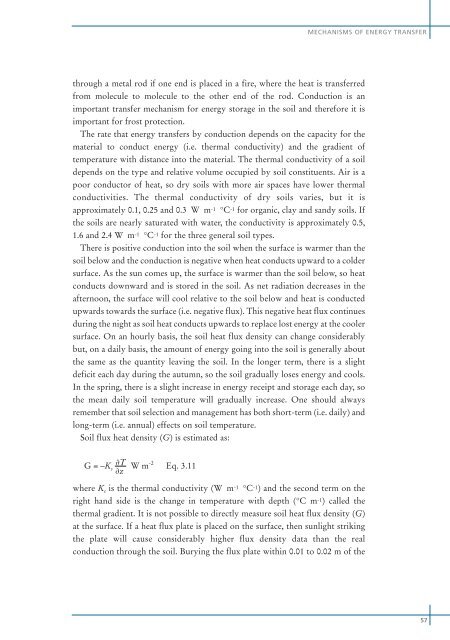
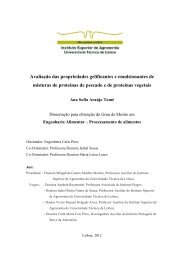
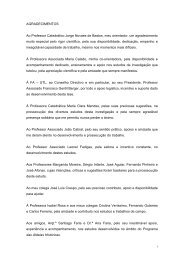
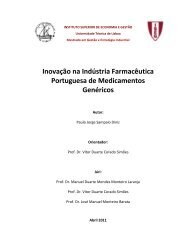
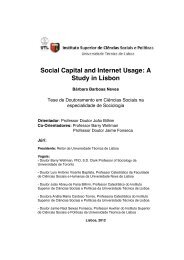
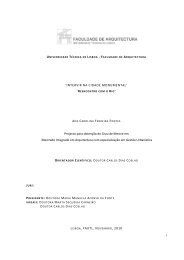
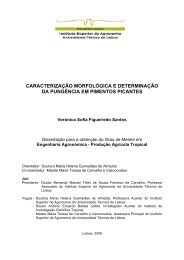

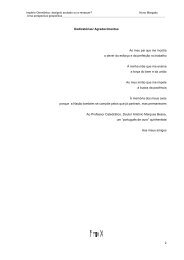
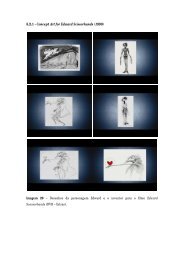
![Tese - Es..[1].pdf - UTL Repository - Universidade Técnica de Lisboa](https://img.yumpu.com/25707135/1/184x260/tese-es1pdf-utl-repository-universidade-taccnica-de-lisboa.jpg?quality=85)


